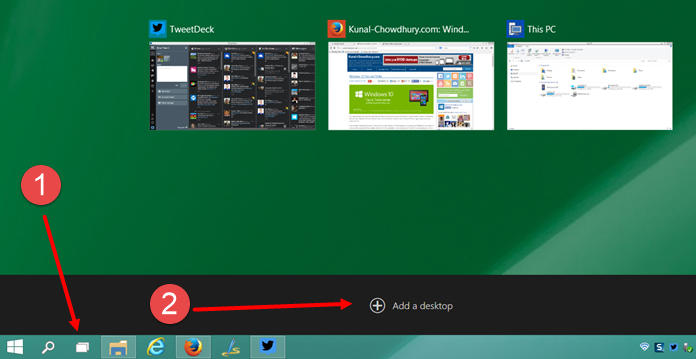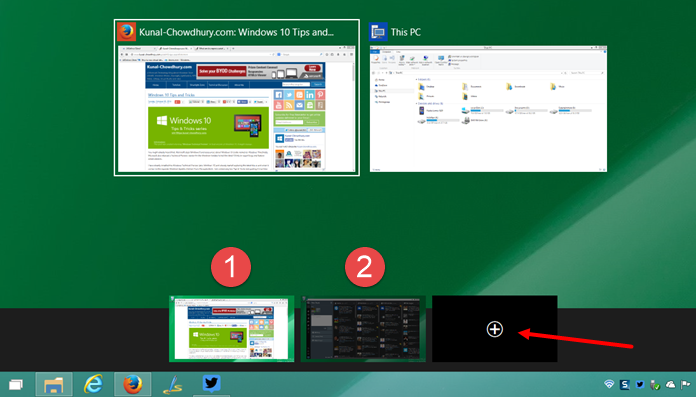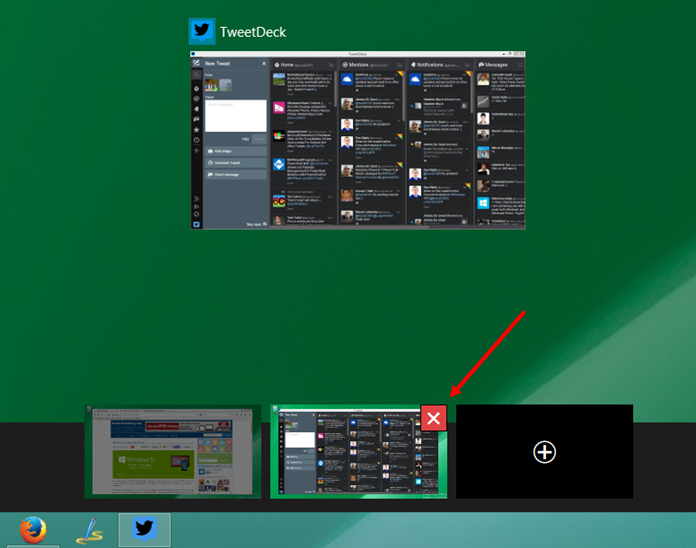How to Use Virtual Desktops in #Windows 10?
Finally virtual desktops were added natively in Windows. If you are using Windows 10, you will be able to use it directly. Though all the fu...- Article authored by Kunal Chowdhury on .
Finally virtual desktops were added natively in Windows. If you are using Windows 10, you will be able to use it directly. Though all the fu...- Article authored by Kunal Chowdhury on .
 Finally virtual desktops were added natively in Windows. If you are using Windows 10, you will be able to use it directly. Though all the functionalities not yet available, but it’s good to see it by default in Microsoft Windows operating system.
Finally virtual desktops were added natively in Windows. If you are using Windows 10, you will be able to use it directly. Though all the functionalities not yet available, but it’s good to see it by default in Microsoft Windows operating system.
In this post, today we will be describing more about Virtual Desktop feature and guide you to understand how to work with it. Continue reading and share your thoughts.

Windows 10, currently in Technical Preview release came with virtual desktop feature where you will be able to add as many desktops you want and open or move your running apps in various desktop screens. If you already installed Windows 10 technical preview, you might have observed one new taskbar icon named “Task View” added near to the start button, as shown below:

This “Task View” icon allows you to switch between various tasks as well as different desktops. Currently in technical preview, you can not change the desktop wallpaper in different screens but you can move apps from one desktop to another. Let’s describe it in detail.
Once you click the “Task View” icon in your taskbar, you will see the running Windows in the screen and an application bar at the bottom of the screen with a ‘+’ icon labelled “Add a desktop” (see the below screenshot). When you click, it will add a new virtual desktop for you to use.

Here you can see, I have two virtual desktops now and can add another one by clicking the “+” icon. You can also observe that the first desktop has two running window whereas the second one has my Twitter client running:

If you want to move one running application window to the other desktop, right click on the task in the view and select the appropriate desktop name where you want to move it.

You can also close any virtual desktop easily by clicking the “X” icon in the tile view as shown below. If any running app windows are present in that virtual desktop, it will automatically move to the other immediate desktop.

As you already know that it’s in development stage, you can expect undeveloped or bugs in this release. Microsoft is definitely working hard to add additional features and resolving the existing bugs. If this comes with Windows 10 in fully functional way, who would like to install any other 3rd party software to add virtual desktops without using the native one!
Finally before ending the post, I would like to know how much you liked it and the current preview version. Drop a line below and share your favourite feature with the entire world. Read out my other posts on Windows 10 here: win10tips.kunal-chowdhury.com.

Thank you for visiting our website!
We value your engagement and would love to hear your thoughts. Don't forget to leave a comment below to share your feedback, opinions, or questions.
We believe in fostering an interactive and inclusive community, and your comments play a crucial role in creating that environment.